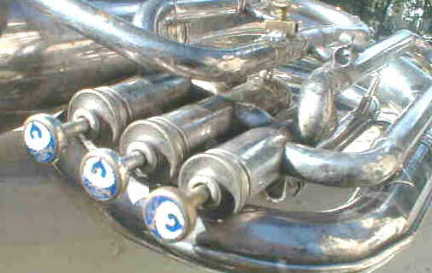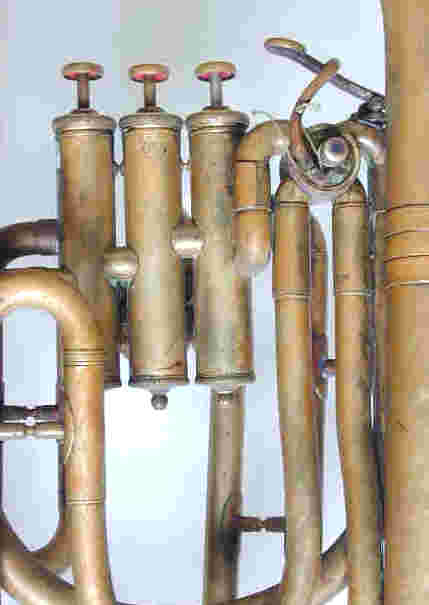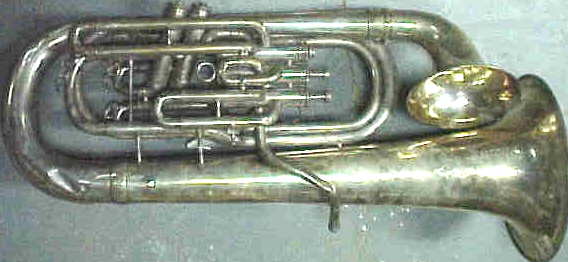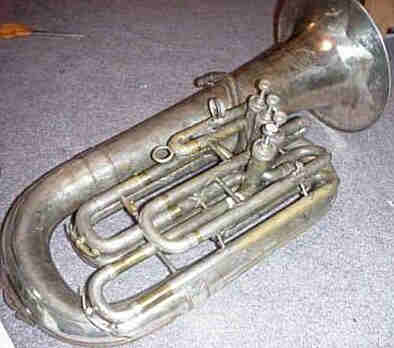

These are pictures of other American models.
Manufacturers A - M (Click here to go to page two)
 American Euphoniums
American Euphoniums

 A 3 valve Keefer euphonium.
A 3 valve Keefer euphonium.

 A 3 valve Keefer euphonium.
A 3 valve Keefer euphonium.

A 3 valve Buescher euphonium with slight damage.

A 3 valve Boston euphonium.

A 1909 Buescher euphonium, note the leadpipe goes
into the 2nd. valve, and the slide fits sideways with a waterkey.

A 1909 Buescher euphonium, note the leadpipe goes
into the 2nd. valve, and the slide fits sideways with a waterkey.

An 1875 Boston rotary side valve euphonium.

A 1915 Boston 4 valve euphonium.

A 1915 Boston 4 valve euphonium.

A 1938 Buescher "True-Tone" 4 valve, 2 bell euphonium.

A 1938 Buescher "True-Tone" 4 valve, 2 bell euphonium.

A 1920's Keefer 3 valve euphonium.(The valve section).

A 1919 Keefer 3 valve euphonium.

A 1919 Keefer 3 valve euphonium.
Brua. C. Keefer was manager at the Distin factory and in 1909
purchased the remaining stock and renamed the instruments left,
remaining in existance until 1942.

A "Silver Piston" model Champion 3 valve euphonium, made in Chicago.

A "Silver Piston" model Champion 3 valve euphonium, made in Chicago.

A modern day Kanstul marching euphonium.

An 1882 Boston 4 valve (rotary & piston) euphonium.

An 1882 Boston 4 valve (rotary & piston) euphonium.

An 1890 Carl Fischer New Creation 4 valve euphonium.
The above picture and following two, are courtesy of David Neill at the
Brass Players Museum, Springfield MA.

A 1925 Holton 5 valve 2 bell euphonium.

A 2 bell Holton 4 valve euphonium.

A Buescher 4 valve euphonium.

A Buescher 4 valve, non compensating, 2 bell euphonium.

A Buescher 4 valve euphonium.
Note the leadpipe going straight into the 2nd.valve.

A Leonard Falcon 4 (in line) valve, non compensating,
left facing euphonium.

A Holton 5 valve, non compensating,
2 bell euphonium.

A Holton 5 (4 in line) valve, non compensating,
2 bell euphonium. (front view)

A Holton 5 (4 in line) valve, non compensating,
2 bell euphonium. (reverse view)
(Click here to go to page two.)
Back to the gallery index

